Bundle up:
Kirkenes
Austin Original: UCHI

Bundle up:
Kirkenes
Austin Original: UCHI
Living life with passion every step of the way
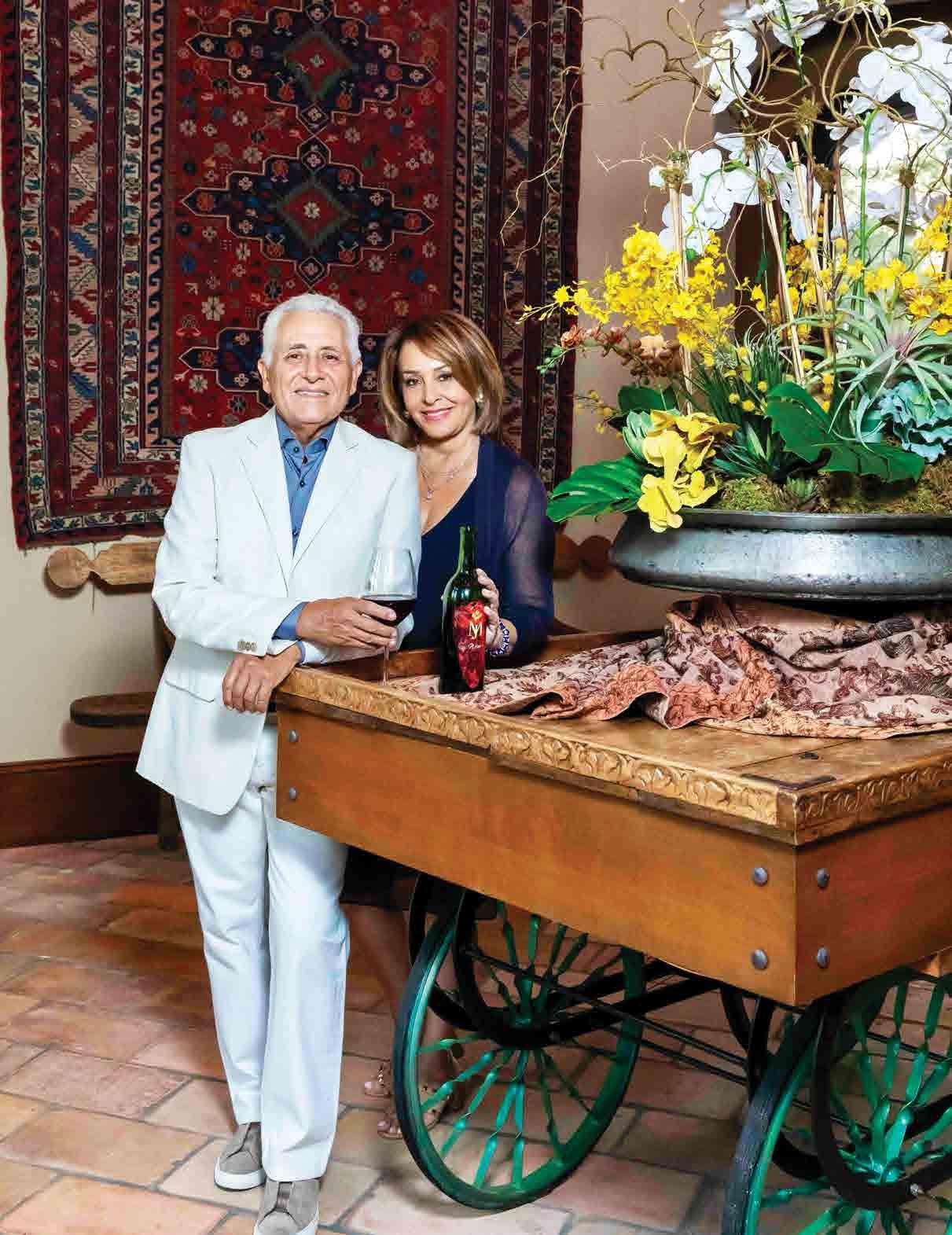
Lavish Living: BIG EASY RANCH


There’s no shortage of great places to hang out in the “City by the Bay” Scott Laird
The esteemed Austin-based Japanese restaurant brand, Uchi, has made quite the name for itself since 2003. In over two decades, the brand has flourished.
Teresa Traverse
Taking the road less traveled has indeed made all the difference. When you live your life with passion, there are no limits to what you can achieve.
Richard Arebalo
All Big Easy Ranch owner Billy Brown wanted was the best. The best for his hunting ranch, his golf course, his clubhouse, practice area and his lodging.
Art Stricklin

Maryam and Majid Rahimian live with passion. They are an
by the example they set.






In golf, the mental game is as crucial as physical skill.
Looking to enhance your stamina and sharpen your focus? Power Yoga is an excellent choice.
In today’s volatile economic climate, inflation is a growing concern for investors.
2024 Aston Martin Valkyrie: Love chid of a jet fighter and supercar.
With fall in full swing, it’s time to rethink your golf wardrobe and prepare for the cooler weather ahead.
The State Fair of Texas is a spectacular blend of culture, food, entertainment, and history, making it the perfect destination for a family outing.
Buck shows you how to stop topping the golf ball. It’s embarrasing and it’s time to stop it.

If sleeping in a warm room annoys you, we’ve got the solution. Try spending the night in an ice hotel, the Snowhotel Kirkenes in Norway.
TRUE linkswear brings minimal golf shoe technology into the next generation.
There is an art to wine service. See what it’s like from a Sommelier’s perspective.
Cigars are better when paired with a fine whiskey or cognac. We have a few suggestions for you.


As we transition into fall, a time of reflection and change, it’s a moment to embrace the beauty that each season brings. While the eastern part of the United States is renowned for its spectacular display of autumn colors and foliage, we here in the west of the Mississippi have our own unique beauty to celebrate. Fall offers us a respite from the scorching heat we’ve endured throughout the summer. You can feel the change of the air it’s a little cooler it’s absent of that heat. This time of the year, the thermometer is a friend. We cherish the thrill of football season, and just like Summer there is a tangible feeling of hope and an anticipation of the cozy, crisp days ahead.
In this issue, we’re thrilled to feature a captivating piece by Richard Arebalo on Majid Rahimian, a truly remarkable individual whose journey is both inspiring and humbling. Richard, renowned for his work in food and wine writing, brings a unique perspective to his storytelling. His passion and ability to convey the essence of his subjects shine through, offering a profound and elegant portrayal of Rahimian’s journey. Rather than approaching the story as a reporter, Richard’s narrative style captures the spirit and significance of Rahimian’s achievements in a way only he can.
Majid Rahimian’s story serves as a poignant reminder that success is multifaceted. While many of us are on a relentless quest for achievement, Rahimian’s path highlights the importance of what we contribute to our families and the broader impact we have on others. It also shows that you don’t have to be the loudest most abrasive and obnoxious person in the room to get the most done. It’s a testament to
how success can be measured not only in professional milestones but also in the way we live our lives, inspire those around us, and leave a legacy.
We venture into the cold of the icy marvels of the coldest hotel in the world, Norway’s SnowHotel, where you can experience a night amidst crystalline beauty. From there we are back to the dynamic cityscape of San Francisco, a place that never ceases to captivate with its blend of culture, cuisine, and innovation.
As we approach the end of the year, we are excited about the continued growth and expansion of OTL Magazine. We have added several new members to the team and their contributions will be showcase very shortly. Our commitment to serving you, our valued readers, is unwavering. We strive to provide you with the tools, insights, and inspiration necessary to lead the best life possible. Our dedication to delivering exceptional content and exploring new avenues ensures that we will continue to support you with relevant and enriching information as we move into 2025. Together, we will embrace the opportunities ahead and make the most of the exciting developments on the horizon.
Thank you for your continued support. We hope you enjoy this issue and find inspiration in the changing seasons and the stories we share.
There are so many people who contributed to this issue that we’re not mention here but they all know that they are greatly appreciated.
Enjoy.

Sedric Walker • Publisher








PUBLISHER
PUBLISHER
Sedric Walker
Sedric Walker
ART DIRECTOR
EDITOR-IN-CHIEF
Leticia Galarza
Tony Dean
GOLF FEATURES EDITOR
ART DIRECTOR
Carl Mickelson
Leticia Galarza
ASSOCIATE PUBLISHER
Natalie Kalbas
FEATURES EDITOR
GOLF FEATURES EDITOR
Carl Mickelson
Richard Arebalo
TEACHING PROFESSIONAL
FEATURES EDITOR
CONTRIBUTING WRITERS
PHOTOGRAPHERS
Andon Guillory, Loui Shaya
CONTRIBUTING WRITERS
Richard Arebalo
Buck Mayers
PHOTOGRAPHERS
TEACHING PROFESSIONAL
Kevin Chin
Buck Mayers
CONTENT SPECIALIST
Joel McColl
Mike Bailey, Hunter Ham, Alejandra Aguilar, Tomas Zilinskis, Teresa K. Traverse, Art Stricklin, Denise Camp, Scott Laird
Michelle Keller, Leslie Stevenson, Art Stricklin, Tara Lee Maloney
INTERNET & DIGITAL
Mario Rossi
INTERNET & DIGITAL
Alexandria Moya, Karen Kreeps
OTL magazine is published bi-monthly by Pristine Media, Inc. Executive, editorial,and advertising offices are located at 210 Grand Isle Drive. Round Rock, TX 78665. Advertising rates furnished upon request. Advertisers
OTL magazine is published bi-monthly by Pristine Media, Inc. Executive, editorial,and advertising offices are located in Round Rock, Texas. Advertising rates furnished upon request. Advertisers warrant and represent that the descriptions and depictions of the products or services advertised are true in all respects. All advertising is subject to approval before acceptance. OTL reserves the right to refuse any ad for anyreason whatsoever. ©2024 by OTL. All rights reserved throughout the world. Reproduction in whole or part without the express written consent of OTL is strictly prohibited. Editorial queries and manuscripts should be directed to the editor via email, editor@otlgolf.com. All letters and their contents sent to OTL are sole property of OTL and may be used, printed, and published in any matter whatsoever without limit, obligation and liability to the author thereof. All views expressed in all articles are those of the authors and artists and not necessarily those of OTL or its advertisers. Manuscripts should be accompanied by self-addressed, stamped envelopes. OTL assumes no responsibility or liability for the return of unsolicited artwork, manuscripts or pictures. Printed in the USA.

There’s no shortage of great places to hang out in San Francisco. The “City By The Bay”, as it’s known, is reputed for mild weather, multicultural heritage, great food, and spectacular views of the San Francisco Bay from the hills that dot the peninsula—that is, when the bay isn’t covered by a thick coating of the fog it’s famous for.


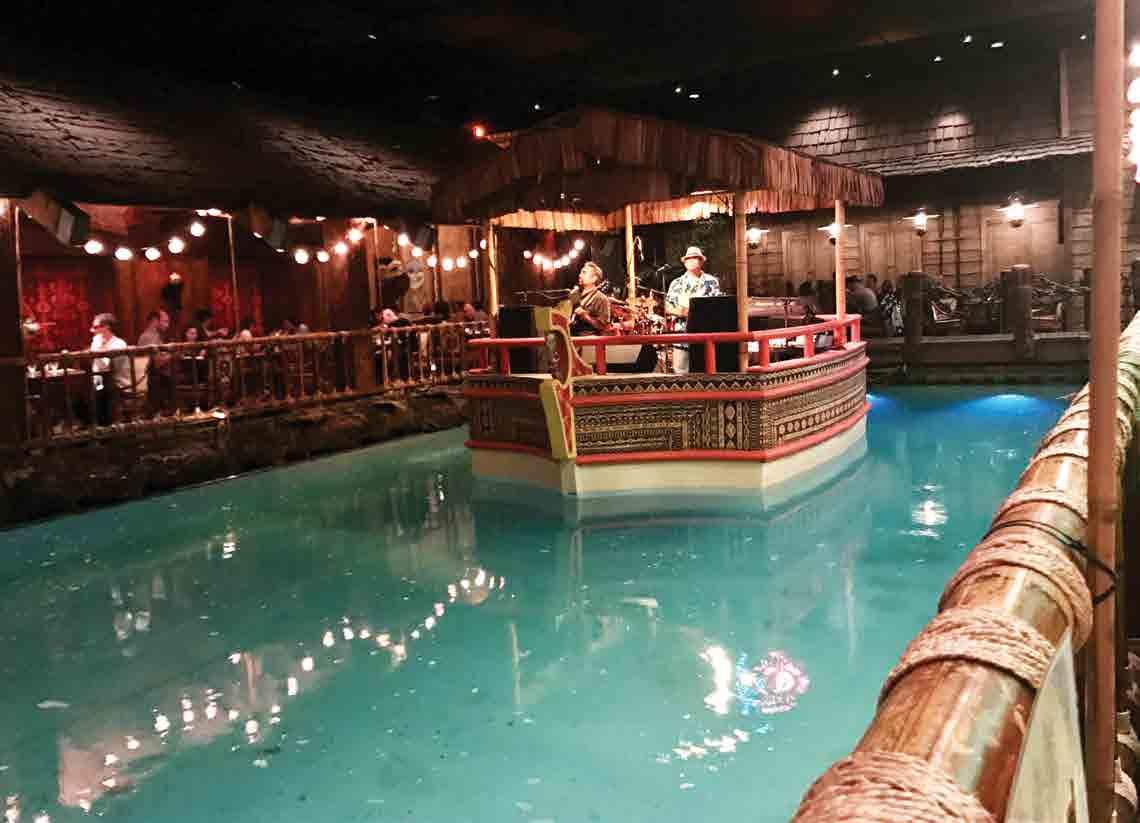
he city has long been a cultural crossroads. For decades it was the principal metropolis on the U.S. West Coast, its fortunes originally rising in shipping, banking, and commerce. It was also a focal point for early Chinese immigration to the United States—the city’s Chinatown is one of the oldest and largest Chinese expatriate communities in North America.
A good place to start explorations in San Francisco is the historic The Palace Hotel, a Luxury Collection Hotel. Established in 1875, the original building was destroyed in the 1908 earthquake that virtually leveled the city. The current building was completed in 1909 in the Beaux Arts style, perhaps most famous for the magnificent glass cupola topping the former carriage entrance now known as the Garden Court.


The space has hosted generations of the city’s most prestigious events, including conventions in 1919 and 1945 for diplomatic negotiations to end both world wars. The early formative sessions of the United Nations were also held here. Less momentous but no less memorable was the invention of green goddess dressing, which remains on the menu in the Garden Court today.
Another spectacular hotel is just a cable car ride up Powell Street, The Fairmont San Francisco was also a site for the drafting of the United Nations charter in 1945 (and the city of San Francisco itself almost became home to the fledgling organization’s headquarters). That year also saw the opening of the tiki-themed Tonga Room & Hurricane Bar in a converted swimming pool—and it’s still open today, serving up tiki cocktails and very midcentury Chinese-American cuisine to a packed house of kitsch worshippers who come most evenings to dance to music from the live band floating on a barge in the middle of the pool.
Another reason to book a room at The Fairmont is the view. There’s the historic building, which is topped by a rooftop garden (which even has large palm trees) complete with apiaries which yield honey served in the hotel’s restaurants, but the for jaw-dropping views, book
a room in the more modern hotel tower—corner rooms have wraparound views of the city, from the Golden Gate Bridge to the Bay Bridge and downtown core.
For a more luxurious accommodation—also with spectacular views, try the Four Seasons San Francisco at Embarcadero, which takes up the top 11 floors of the towering California Center skyscraper. Even when booking guestrooms that don’t have wraparound views (and most of them do) guests can step into the corridor where glass-encased skybridges have QR codes posted to inform guests about the sites they’re seeing. Fun fact: these are the highest hotel rooms in the city.
When it’s time to get out on the water, take the cable cars on the Powell/Hyde line all the way up to Fisherman’s Wharf where many of the bay cruises depart. Red and White Fleet is a favorite operator, offering cruise to the Golden Gate bridge, and many of those also stop at Alcatraz Island for visitors who want to poke around the notorious island prison, from which there has never been successful recorded escape attempt (a handful of prisoners who went missing were presumed drowned). Over the years, the prison famously held prisoners ranging from Al Capone to George Barnes “Machine Gun Kelly”. Alcatraz is operated by the National Park Service today as part of the Golden Gate National Recreation Area.



The city is also known for its art museums, in particular the Fine Arts Museums of San Francisco, comprised of the De Young Museum and the Legion of Honor. Located in Golden Gate Park, The DeYoung Museum focuses on American Art from the 17th through 21st Centuries, and also has a fine selection of paintings from international artists, notable Mary Cassatt, and Georgia O’Keeffe, in addition to a frequent cadre of touring collections. The museum also specializes in art made in California during the Gold Rush, Indigenous pre-contact art, and art of the Spanish and Anglo Colonial periods.
The Legion of Honor, in nearby Lincoln Park, focuses on ancient artifact art, European arts and crafts, furnishings, and ceramics. It also has a notable sculpture collection headlined by Auguste Rodin’s The Thinker, and a large collection of Impressionist and Post-Impressionist art from
artists such as Renoir, Monet, Degas, Pissarro, Cézanne, Van Gogh, and Seurat.
When it’s time to dine, the city is at the cutting edge of culinary traditions, with a vibrant restaurant scene that seems to frequently evolve. Italian cuisine is a perennial favorite, with plenty of early Italian immigrants shaping the region’s taste—and virtually any meal served in the city will be accompanied by a list of fine California wines, either from nearby Napa Valley, Sonoma Valley, or Russian River Valley, among many others. In fact, there are more than 1700 wineries located in North Bay, according to the state’s alcohol control board. Although not commercialized on a large scale until the late 20th Century, wine has been produced in Northern California since 1812.
A perennial food favorite in San Francisco that sort of emblemizes the city’s quirkiness is The Stinking Rose in the North Beach neighborhood, which proclaims to “season its garlic with food”, even serving garlic ice cream. It’s known for Bagna Cauda, a hot skillet garlic roasted in olive oil and butter, served with bread for spreading, 40 clove garlic chicken, and garlic prime ribeye steaks. Garlic is another major product of the region, mainly coming from Gilroy, California, south of the city, which is known for its production of the odiferous plant.
Not quite in Chinatown, but in the Financial District, is the no frills, but immensely tasty Yank Sing, a family-owned dim sum restaurant that still brings steaming trays of the dumplings around to the lazy susans on each table. Busiest during weekday lunches, it’s a fair value and a dependable spot in a city known for shifting tastes and a dynamic dining scene.
San Francisco has gone through turbulent times throughout the years. After the 1908 earthquake some feared the city would be abandoned. During the Second World War it was thought to be a prime target for attack, and lingering effects of the COVID-19 pandemic have pundits wondering if the city’s downtown core will ever revive as office space is reduced in favor of remote work and some companies leave the city, for greener pastures and cheaper rents. Some of the city’s woes are admittedly apparent to visitors, but at the core, San Francisco remains a vibrant city with plenty to offer visitors and residents, with no shortage of potential for a bright future.
Tony Bennett once crooned that he left his heart in San Francisco “where little cable cars climb halfway to the stars”. Decades after the city was immortalized with those lyrics, it’s still not difficult to see why visitors may be similarly at risk of falling just a little bit in love with the “City by the Bay”.
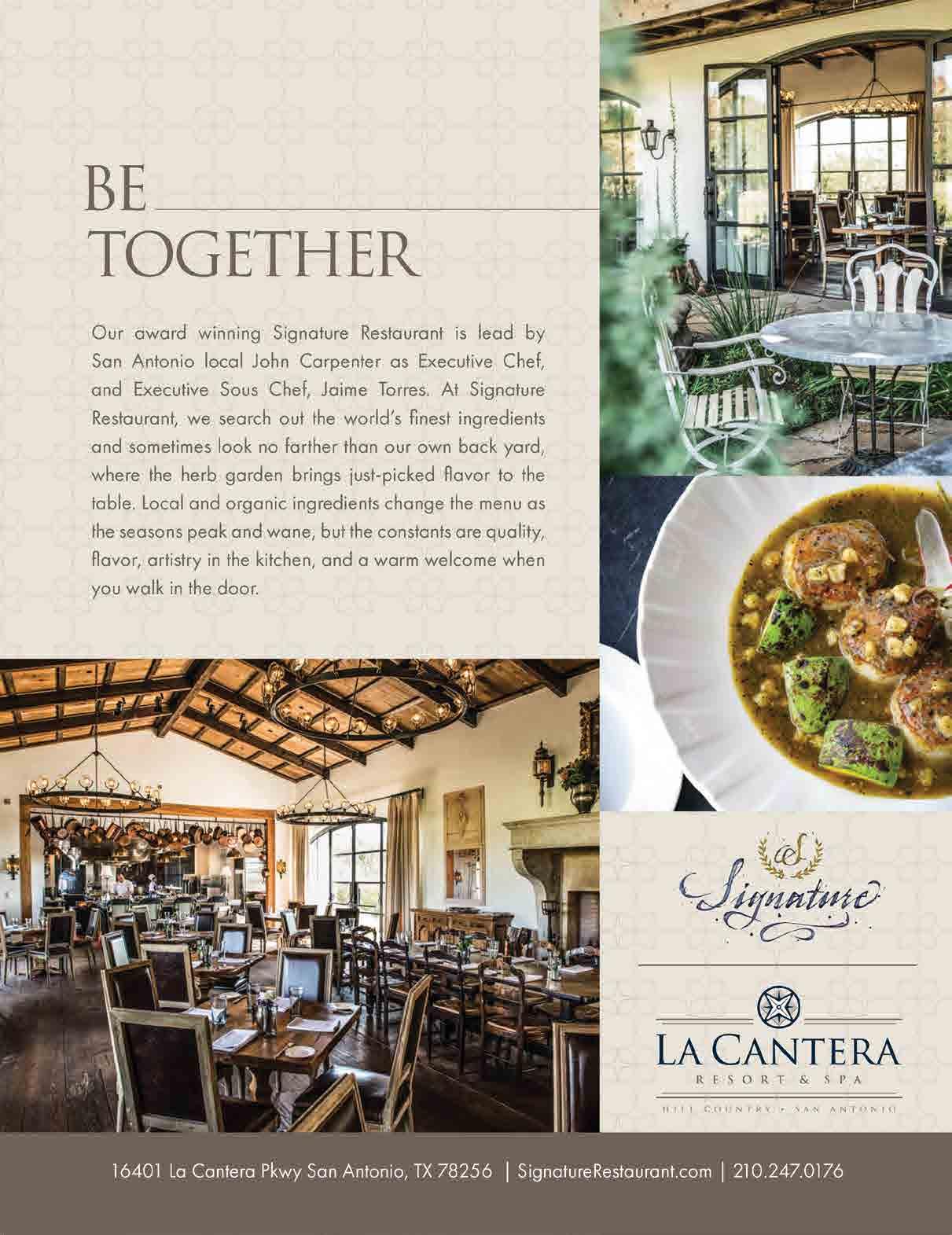

In golf, the mental game is as crucial as physical skill. Staying calm, focused, and confident can make a significant difference in your performance. By developing a strong mind-body connection, you can enhance your mental fitness on the course. Here are three practical techniques—mindfulness, visualization, and breathing exercises—to help you play your best.
1. Mindfulness: Stay Focused on the Present
Mindfulness helps you stay present and focused, reducing distractions and anxiety. To practice mindfulness on the course:
• Focus on Your Senses: Before each shot, take a moment to feel the grip of the club, the ground beneath your feet, and the breeze. This practice keeps you grounded in the present.
• 5-5-5 Breathing: Inhale deeply for 5 seconds, hold for 5 seconds, and exhale for 5 seconds. This simple breathing exercise calms your mind and enhances focus.
2. Visualization: Rehearse Success in Your Mind
Visualization helps you mentally prepare for each
shot. To practice visualization:
• Pre-Shot Routine: Before stepping up to the ball, close your eyes and picture the shot you want to make. Visualize the swing, the ball’s flight, and its landing spot.
• Daily Practice: Spend 5 minutes a day visualizing yourself playing a satisfying round. Imagine each shot vividly, engaging all your senses. This builds confidence and reinforces muscle memory.
3. Breathing Techniques: Maintain Calm Under Pressure
Controlled breathing is essential for managing stress and staying relaxed:
• Box Breathing: Breathe in for 4 counts, hold for 4, exhale for 4, and hold again for 4. Repeat this 3-4 times before a challenging shot to steady your nerves and clear your mind.
By incorporating these techniques into your routine, you can sharpen your mental focus, reduce stress, and improve your performance on the course. Practice regularly, and you’ll find yourself playing with greater confidence and consistency.


STORY BY LINDA PATRECE
If you’re looking to enhance your stamina and sharpen your focus, Power Yoga is an excellent choice. This dynamic form of yoga combines strength-building poses with a continuous flow that keeps your heart rate up, helping you build endurance while staying mentally sharp.
Power Yoga incorporates a series of poses linked by breath, known as Vinyasa. Moving from one pose to another in a seamless flow—like transitioning from Plank to Chaturanga to Upward-Facing Dog and then Downward-Facing Dog—keeps your heart rate elevated, similar to aerobic exercise. This flow builds cardiovascular stamina and muscular endurance, particularly in the core and upper body.

Poses like Warrior II, Chair Pose, and Boat Pose are key components of Power Yoga. Warrior II builds leg strength and endurance, Chair Pose challenges the thighs and glutes, and Boat Pose targets the core, all essential for boosting overall stam-

Ujjayi breath, or “victorious breath,” involves taking slow, deep breaths in and out through the nose, maintaining a slight constriction in the throat. This breathing technique increases oxygen flow, enhances lung capacity, and promotes mental focus. Combine this breath with balance-focused poses like Tree Pose or Eagle Pose to train your mind to stay present and clear.
Incorporating these elements of Power Yoga into your routine can significantly improve both physical stamina and mental focus. Try adding a few of these poses to your practice, and experience the benefits firsthand.


STORY BY ZANE WHITMAN
In today’s volatile economic climate, inflation is a growing concern for investors. While traditional assets can be affected by domestic inflation, savvy investors are looking beyond borders to safeguard their wealth and achieve long-term growth. International investments offer a unique opportunity to hedge against domestic inflation and diversify portfolios, providing a crucial buffer in uncertain times.

Global markets often move independently of one another, meaning that economic turbulence in one region may not directly affect another. By diversifying into international investments, high-net-worth individuals can tap into markets with different economic cycles, inflation rates, and growth drivers. This approach can provide a counterbalance to domestic market volatility and inflationary pressures.
Emerging markets present significant growth potential, driven by rapid industrialization and expanding middle classes. These regions, such as Southeast Asia and parts of Africa, offer compelling opportunities for investors looking for growth beyond the more mature markets. Additionally, developed markets with strong economic fundamentals, like Europe and Japan, provide stability and diversification benefits. These markets can serve as a hedge, especially when inflation erodes the purchasing power of domestic investments.
When venturing into international investments, consider a balanced approach that aligns with your risk tolerance and long-term goals. Diversification across asset classes, such as foreign equities, bonds, and real estate, can enhance your portfolio’s resilience against domestic inflation. Moreover, currency diversification can offer an additional layer of protection, as fluctuations in currency values can offset inflationary losses.
In conclusion, global opportunities provide a strategic avenue for hedging against domestic inflation. By carefully selecting international investments, you can not only protect your wealth but also position your portfolio for sustained growth in an interconnected global economy. As always, consult with a financial advisor to tailor a strategy that aligns with your unique needs and objectives.


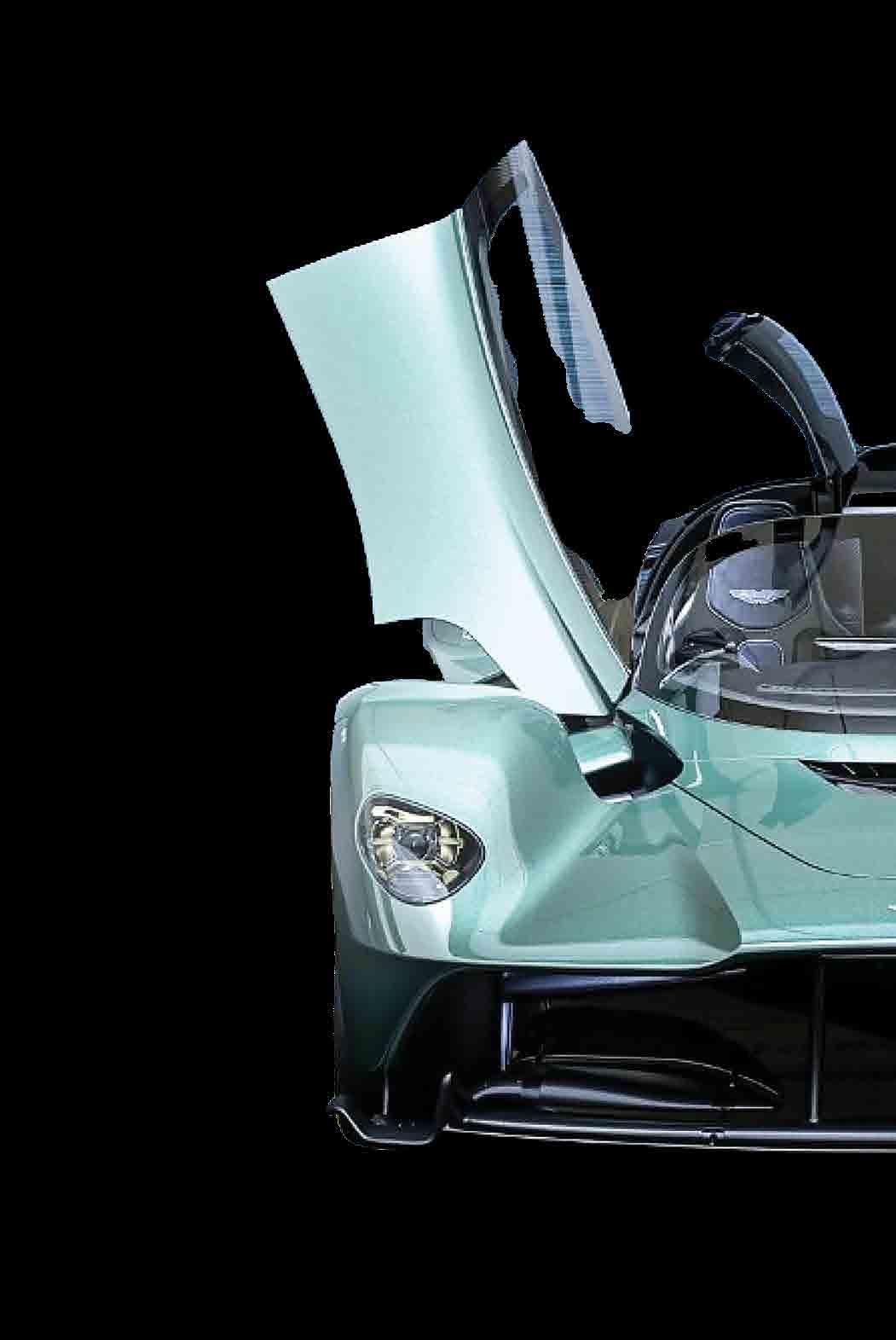





STORY BY TERESA K. TRAVERSE
chi means “home” in Japanese, but the word has also become synonymous with one of the most respected culinary brands in the United States. James Beard award winning chef Tyson Cole is the person behind Uchi. Cole’s background is more than impressive. He trained under two sushi masters for more than a decade in Tokyo, New York City and Austin. Cole is considered to be one of the few American sushi masters. He opened up the first Uchi in a small red bungalow—uchi is also a nod to that former home—in South Austin way back in 2003. Some will even credit Cole with elevating Austin’s dining scene and garnering it the national acclaim that the city has enjoyed ever since. In more than two decades since its founding, Uchi has flourished. A total of seven location have opened across the country. The latest outpost is the Old Town Scottsdale, which opened in February of 2024. The Scottsdale location is Uchi’s seventh location in the United States. A Charlotte, North Carolina, is forthcoming.
Cole’s overall approach, according to a press release we received, was a “simple vision of bringing the intimacy and collaboration of the sushi bar experience to every table in the restaurant.”
Cole’s vision proved to be a successful formula. Uchi is one of a total of five dining concepts from Hai Hospitality. The others are Uchiko, Uchiba, Oheya and Loro Asian Smokehouse & Bar. Uchi is noteworthy for its upscale restaurants serving Japanese cuisine with modern twists.
The Austin location is still housed inside that original red bungalow. The very first Uchi that started it all features a dining room outfitted with wood, red wallpaper and pendant lights that hang from the ceiling. Be prepared to wait to snag a seat here. Uchi is a true dining destination.
Olivia Gordon is the current general manager of Uchi’s Scottsdale location, but the Austin native previously worked at Uchi in Austin. She understands the Hai Hospitality brand well and has been with Uchi since 2018.

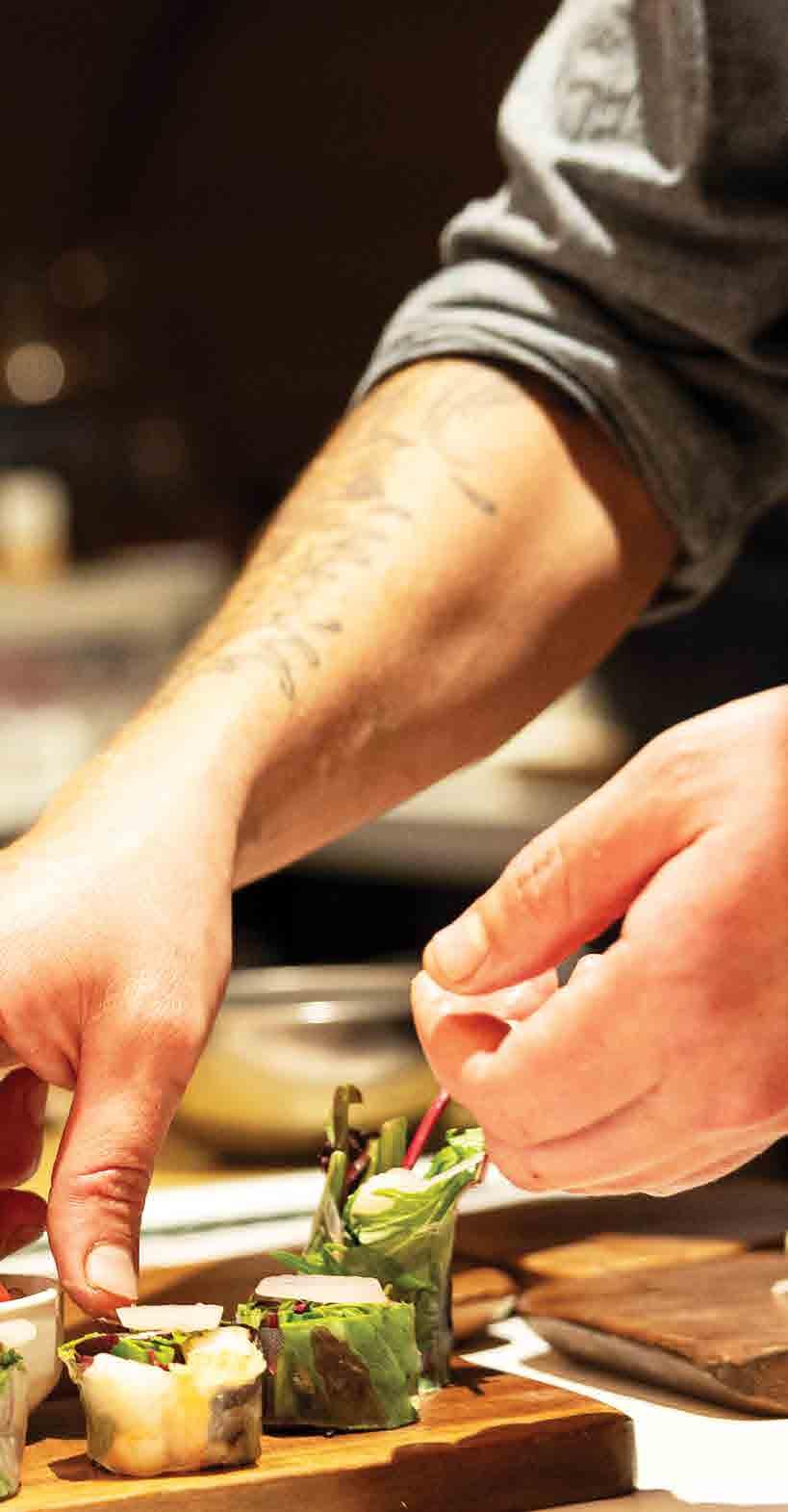



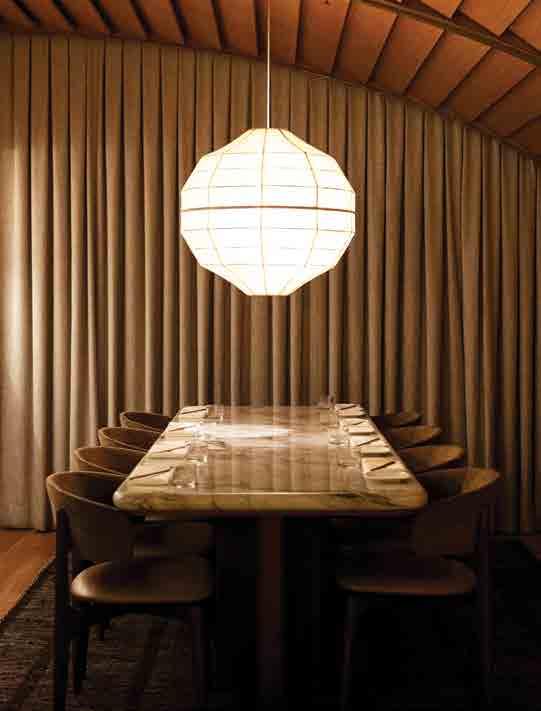
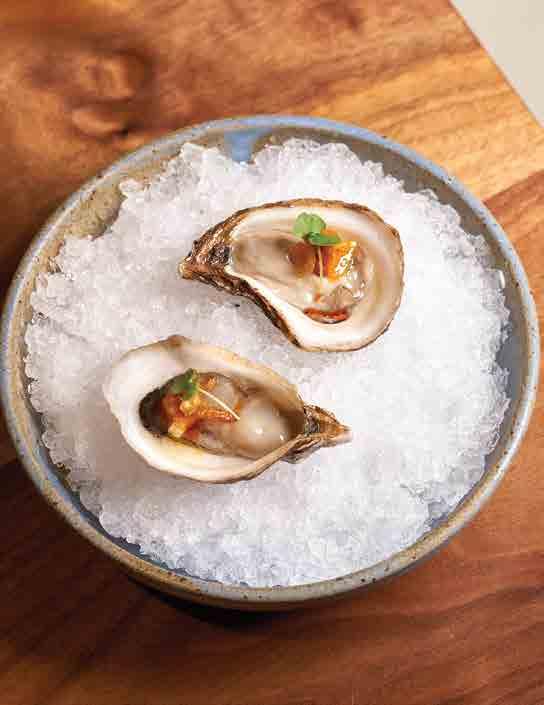

“It’s great food, and it’s great people and genuine hospitality. The mission for every Uchi is to provide that personalized sushi bar experience no matter where you are. Whether you’re sitting at the sushi bar, or at a table or a cocktail bar, you had an experience that is really curated for you,” says Gordon.
Service tailored to the customer is a key prong of Uchi’s approach.
“Service is our bread and butter. We take allergies really seriously, and so if that’s something that anyone is concerned about, we want to make sure that they feel safe dining with us. And then we also just want people to have the experience that they are looking for,” she says. “If they want really quiet, nimble service, we can definitely provide that, but everyone we hire is really knowledgeable and very friendly and wants to be able to guide the experience as best as possible.”
A good representation of this approach to highly personalized service is the “somakase” option on the menu. Somakase is a play on the word “omakase” and features food curated by servers intended to satisfy diner’s individual tastes.
“That’s my favorite way to eat in the restaurant,” says Gordon. “Just let the server know what you are looking for, what you want to see, or what you don’t want. Let them choose some things depending on what’s your favorite.”
Menus across all of Uchi’s locations tend to feature hot and cold tastings, nigri and sashimi, agemono, yasaimono, toyosu, caviar, and a chef-curated omakase menu. The Austin location features premium items like uni and bluefin. Diners can find plenty of fresh fish, of course. Gordon tells us that some of Uchi’s signature dishes are the sushi crudo plates. For instance, guests can order the akami crudo, which features bigeye tuna, aji Amarillo, blood orange and pumpkin seed. The toyosu portion of the menu includes striped bass, ruby snapper, snow crab, albacore and amberjack. Gordon tells us that a lot of the fish comes from Japan.
One of Uchi’s signature dishes? The hama chili, yellowtail, ponzu, thai chili and orange supreme. “It’s sweet. It’s spicy. It’s savory. It’s fresh. It’s just a perfect bite,” says Gordon.
The omakase menu is noteworthy. It changes daily and offers up a wide selection from Uchi’s diverse menu.
“The chefs work really hard to make sure that they’re showcasing the best stuff on the menu,” she says.
Every Uchi outpost has location-specific items. Some local favorites, according to the Austin locations’ website, are the sake tom kha, salmon served with coconut, lime, leaf and dill; pork belly that’s accompanied by Japanese pumpkin, pepper and rose gastrique; walu walu or oak-grilled escolar, yuzupon, candied citrus and myoga; and the kurodai nigiri or sliced black bream served on top of rice; shima aji crudo or the striped jack, seasonal mushroom and brown butter.
Robust fish selection aside, Uchi also features a long list of vegetarian and vegan options.
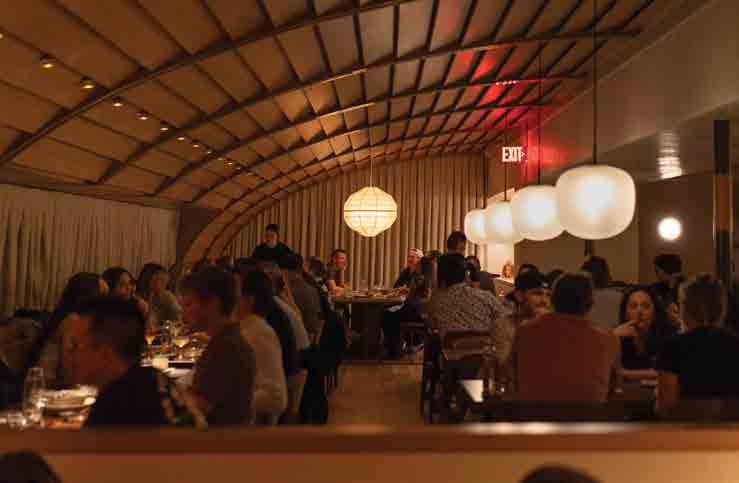





“We have a lot of vegetarian and vegan options,” she says. “You don’t think of that usually whenever you are thinking sushi. And so it is really fun to be able to offer people that are vegetarian dishes that showcase the flavors of vegetables.”
Some veggie dishes include cauliflower tempura, avocado nigiri and mapo dofu, a mix of tofu, shitake ragout and Szechuan pepper.
The drinks menu also caters to a wide variety of tastes. Diners can imbibe beer, wine, zero proof beef and wine, sake and sparkling. Some creative cocktails include the Toyko Mule, made with a ginger beer, lime and sake in addition to the Kara Kyuri, a libation made with Yuzu, cucumber, Thai chili and sake.
Many restaurants don’t tend to stick around for very long. But Uchi is not just any restaurant. With its inventive Japanese cuisine and excellent service, the Hai Hospitality group has found a formula for success.
“If you enjoy good food, if you enjoy a fun environment, if you like going out to eat, it’s a really fun place to go to,” she says. “We pride ourselves on fresh food and warm service.”


STORY BY ALEJANDRA AGUILAR

With fall in full swing, it’s time to rethink your golf wardrobe and prepare for the cooler weather ahead. When it comes to fall golf, layering is key. Golf is always more fun when you’re out on the course with friends, and looking stylish together makes it even better.
For those cooler mornings, try pairing sleek slacks with a lightweight, long-sleeve top. A bomber jacket adds a trendy yet functional layer to keep you warm without sacrificing style. The best part? You can easily shed it once the temperature rises. This versatile combo is perfect for those crisp fall days when you need to stay comfortable without feeling bulky.
If you’re aiming for a more polished, elegant look, the monochromatic trend is a great option. An all-black outfit—like a fitted sweater and black joggers with subtle white trim— offers a sophisticated and chic vibe while keeping things practical for the course. This style gives off an effortlessly sleek appearance while still being comfortable and functional.
Whether you’re keeping it casual or opting for a more refined look, fall is the perfect time to showcase your golf fashion. Stay warm, stylish, and confident on the course this season, and most importantly, enjoy every round with your friends!
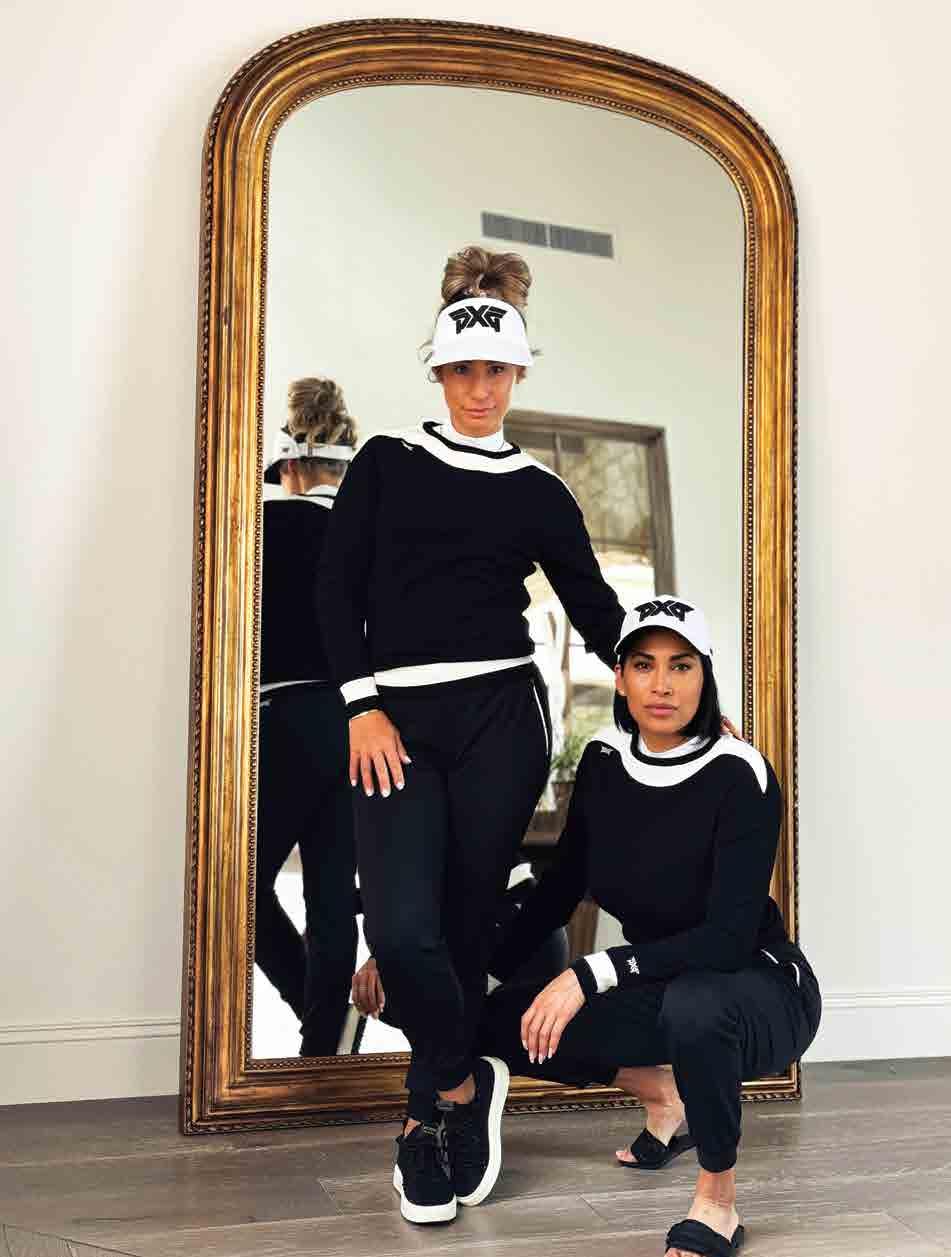

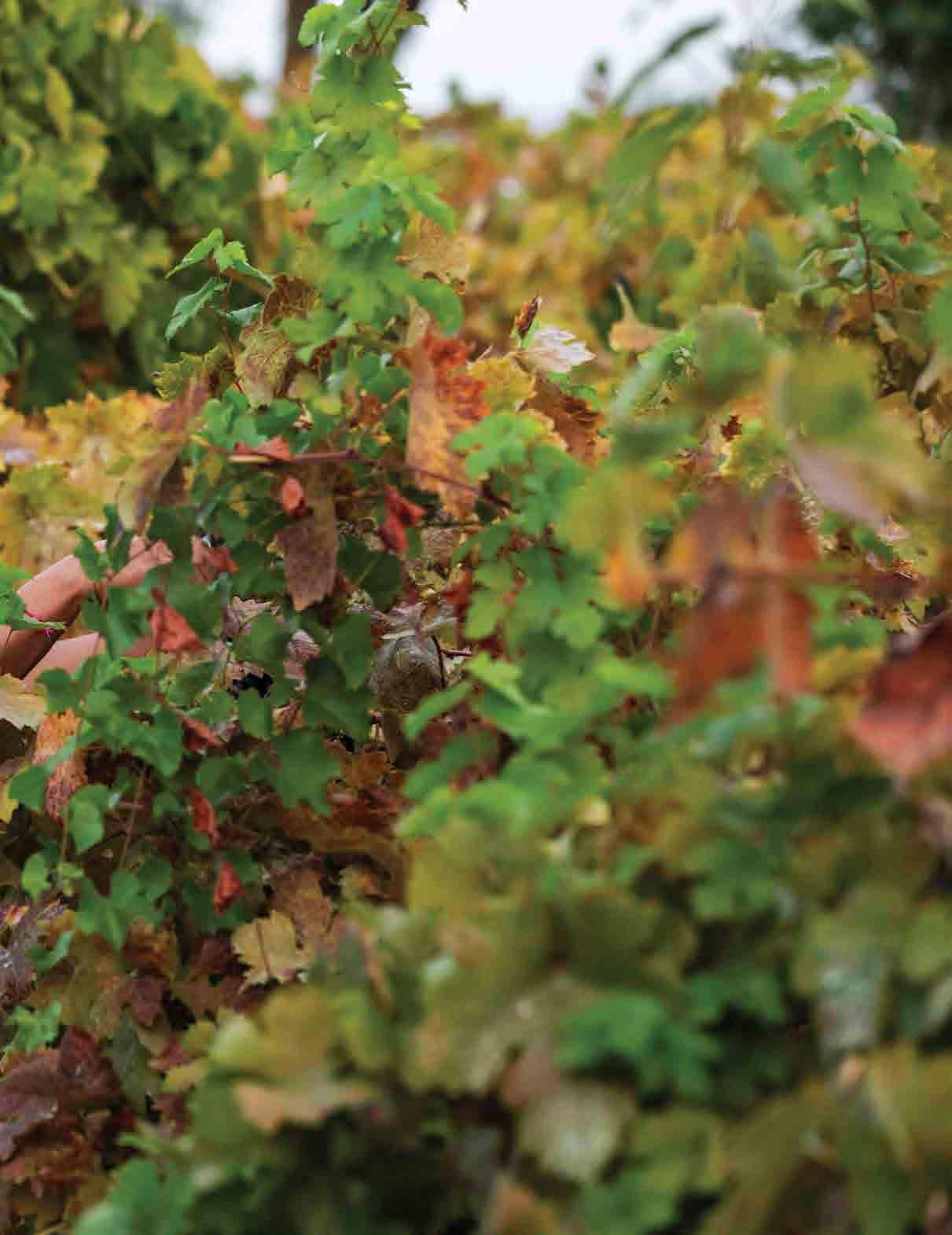
STORY
In midsummer, it’s good to cut back excess growth on grapevines to ensure that the grapes get as much ventilation as possible. This helps avoid fungal problems that are common to grapes.
Earlier this year, I had the pleasure of interviewing Majid Rahimian at his home in Sacramento, California. On an unusually warm morning, I was given a tour of the sprawling compound on a high bluff overlooking the Sacramento River and the Sierra Nevada mountains in the distance. I was struck by how the grounds were like the descriptions I had read of ancient Roman villas. The Tuscan-styled house is faced with an array of large brown, tan, and gray stones and is topped with a reddish clay tile roof, furthering the Roman effect. Along the front of the house are fountains, cone-shaped pines, palm trees, manicured hedges, and flower beds, but running along the center of the backyard was essentially a small vineyard. The property also contained lemon trees, olives, figs, pomegranates, and sour cherries. All, I was told, produced very nicely. The vegetable garden had eggplants, squash, and tomatoes, and I noticed large clay pots in various alcoves with huge plants studded with tiny tomatoes. Herbs were also planted in multiple places, decoratively and for utility.
s it turned out, the day was to be special, as the three daughters and their children were all in for a visit.
As the interview went from breakfast coffee to lunch and afternoon wine, I saw Mr. Rahimian was an attentive grandfather. The kids asked to play or brought him things like oranges from the garden.
His daughter Mona, whom I’m acquainted with, told me that her father loved to create things for them when they were kids. She fondly remembers a “pepper festival.” The kids would have friends over to make jars of hot sauce or pepper spreads. She said her dad loved making jams and fruit leather, and all the better because the fruit came from the gardens.
She also told me that his wife, Maryam, though very accomplished in business herself, has always supported his hobbies and passions.
While work initially consumed much of his time, as life fell into a comfortable rhythm, Mr. Rahimian could devote more time to his family and his hobbies. Mona conveyed that with a quiet drive, he always seemed to excel, whether in tennis, gardening, or any philanthropic pursuits.
A few years ago, he started to make wine from the grapes in his garden. He purchased processing equipment, such as a de-stemmer, large storage containers, and a corker, and through considerable study and effort, he managed to make some very nice Zinfandel. I saw many bottles from prior vintages in a lovely wine cellar downstairs, the bottles smartly labeled with his monogram.
Though not as common a purchase for me these days, I’ve always liked Zinfandel wines. When they’re not alcohol bombs, they can be effortless to drink and generally easy to pair with food. Majid’s
wine is pretty sophisticated for a one-person show. The California climate likely helps it stand pretty well against many Texas wines I’ve had. (And even some California.)
As the day unfolded, I enjoyed sharing a meal with the family. The house, which had been relatively quiet during our morning interview, soon filled with laughter and chatter as various family members arrived. Majid’s wife and mother-in-law, both talented cooks, prepared a veritable feast of Persian dishes, a variety of appetizers, salads, and a new favorite to me, Khoresh Bademjan, a flavorful eggplant and chicken stew.
The warm family atmosphere of the Rahimian household was palpable. It would have been easy to feel like an outsider, but someone always engaged me in easy conversation like I was just another family friend. As good as the food and company were, the large backyard pool was definitely the kid favorite.
Years ago, a good friend explained that being a good host was a Persian virtue taken quite seriously—a point of pride like “Southern hospitality” in reputation. I can say I witnessed a fantastic personal example.
Sometime after lunch, I got to try some of Majid’s wine and an unusual culinary treat called verjuice (or verjus). Verjuice is a tart, acidic juice made from unripe grapes. It can be used as a substitute for lemon juice or vinegar in salad dressings or other recipes. It is pretty standard in many Middle Eastern cuisines, but interestingly, it was known and valued as a seasoning in ancient Persia.
Majid explained that the step beyond the verjuice (or wine) is a very serviceable vinegar. He makes enough to store and use by the family but also enjoys being able to make gifts of the things he makes.
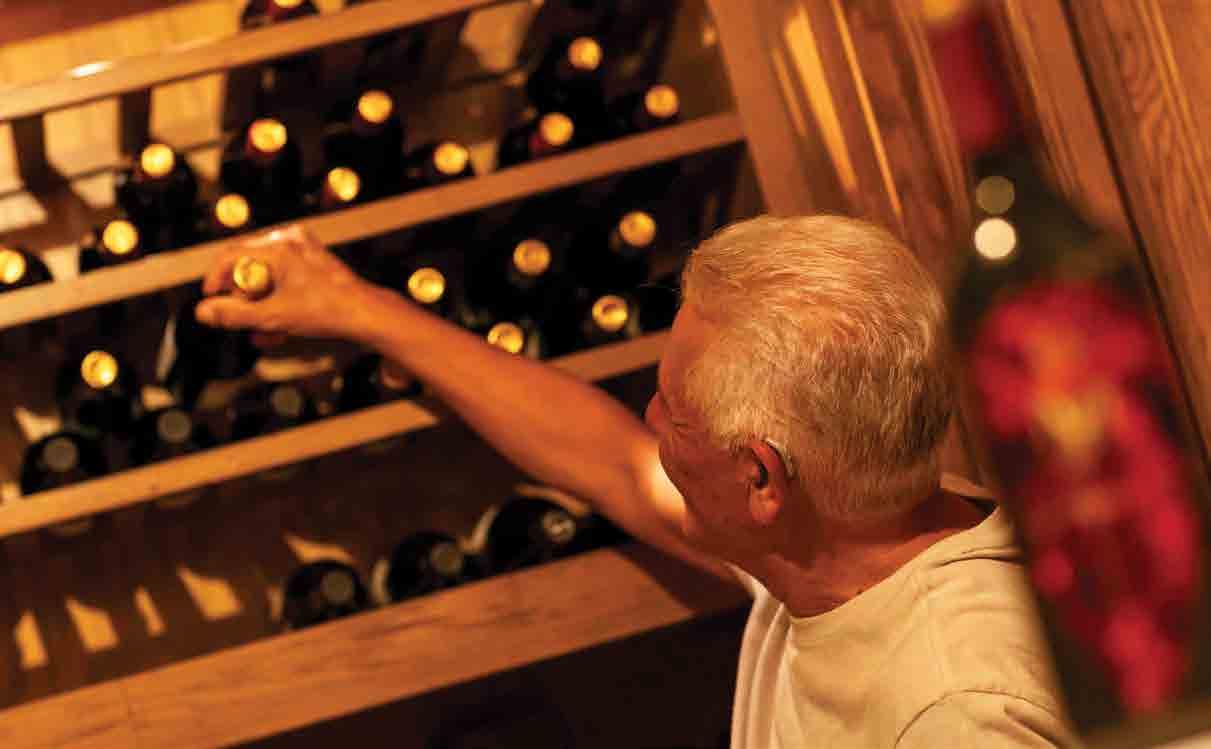
As the house is built into a hillside, the many rooms are on various levels. Towards the front of the house, down a dramatic staircase, is a “Persian room” filled with carpets and wooden benches—a quiet, calm place for conversations or contemplation. We sat for the better part of an hour discussing philosophy, Persian poets, and a great deal of business success.
Majid Rahimian decided to move to the US from Iran in 1969 when he was just 16. His brother was already attending University, which helped facilitate such an early move.
In 1975, he graduated from UC Davis, majoring in Computer Engineering, and eventually earned a master’s degree in Computer Engineering from Sacramento State University. He used his training in various ventures before starting his own company in 1983.
Fortunately, he chose northern California, as it would eventually become the epicenter of electronics worldwide.
Like nearly every part of our lives, our tools and toys have changed tremendously as technology has been incorporated into almost every item we own.
A beautiful label.

At first, I was a bit confused about how Mr. Rahimian had built such a large and successful company. I initially thought elevator control was a relatively simple type of system. He explained that in small buildings, elevators would perhaps be simple, but in large buildings with many highspeed elevators and very many stories, the sophistication needed for efficient control increases tremendously.
A bit of research showed that in the 1970s, the elevator industry relied on hundreds of relays assembled on panels for logic processing. These systems were state-of-the-art before microchips and microprocessors replaced them. Computer software and microchips eventually replaced many elevator Systems and dispatching logic.
As the elevator industry adopted new technology and service paradigms, more current equipment was needed. Additionally, proprietary electronic service tools were required to adjust, troubleshoot, and maintain the new equipment.
In 1983, Mr. Rahimian, his brother Javad, and Don Alley co-founded Motion Control Engineering (MCE). Driven by changing customer demands and an entrepreneurial spirit, this company became a significant player in elevator technology and service evolution. Their pioneering work led to the development of the nonproprietary “Universally Maintainable” control system.
MCE naturally suited Mr. Rahimian’s studies and particular interests. He enjoyed designing the software and boards that were at the core of the business. He comanaged MCE for twenty-two years. The company is now owned by Nidec Motor Corporation of Japan and offers products and technical services in more than twenty Countries.
In 2005, Mr. Rahimian made a significant move: He left Motion Control Engineering, marking the end of an era and the beginning of a new chapter in his professional journey.
Too early to retire, Mr. Rahimian and his brother looked for a new challenge and

found it in NMI Industrial Holdings. The specialty fabrication company based in Sacramento, California, had suffered from declining sales and would take some effort to turn around.
NMI was labor-centric when they bought it, and the types of projects were generally less complicated. Eventually, the company became more engineeringcentric, and the types of projects became vastly more interesting. Two projects that stood out to me were facilitating the baggage handling equipment for LAX airport in Los Angeles and build -



ing a glass plant for Gallo Wine. I was dumbfounded to learn that Gallo creates 1.2 billion bottles of wine annually—no small project.
During our interview, Mr. Rahimian told me he was a great fan of former Southwest Airlines founder Herb Keller. He admired Mr. Keller’s spirit and creativity. He initially purchased several copies of Mr. Keller’s book for his senior staff. He eventually had to resort to audio versions to get the staff to go along. He managed to change the culture without having to fire the people who opposed him. By fo-
cusing on his vision and leading by example, Mr. Rahimian was able to get the culture change he wanted—a quiet revolution of sorts.
Today, NMI employs between 75 and 120 staff members, expanding or contracting as the projects demand. His leadership and expertise have significantly contributed to the company’s success in the construction industry.
Although Mr. Rahimian is still active in his company, he has been able to delegate many duties to the company’s COO and the leadership team. He now has more time to devote to his other passions.
In 2001, Mr. Rahimian and his wife worked closely with the Sacramento Library Foundation on a series that brought artists to town to benefit the local library. They managed to bring the renowned Iranian composer and pianist Anoushiravan Rohani to town. Mr. Rohani is known for composing and playing concert piano. He has also composed scores for Iranian films. Interestingly, he is credited with creating the “Happy Birthday” song “Tavalodet Mobarak,” which is still sung all around the world in Persian-speaking families.
The meeting in 2001 started a long friendship, and most recently, Mr. Rahimian and his wife traveled with Mr. Rohani on twenty of his international tours, which covered North America, England, Dubai, and Australia.
As Mr. Rahimian continues into his third act, I am confident his drive will lead him and his family to more extraordinary adventures. With six grandchildren, a wealth of knowledge will be passed along.
One final impression I still have is that Mr. Rahimian seems to do everything with a uniquely quiet drive. When he was describing his wine, he simply found something he wanted to do, set about learning it, and simply did it. There was no bragging, no impression that he had some great secret above his competitors or peers.
His idyllic family life and history of business success speak to that process being extremely successful.


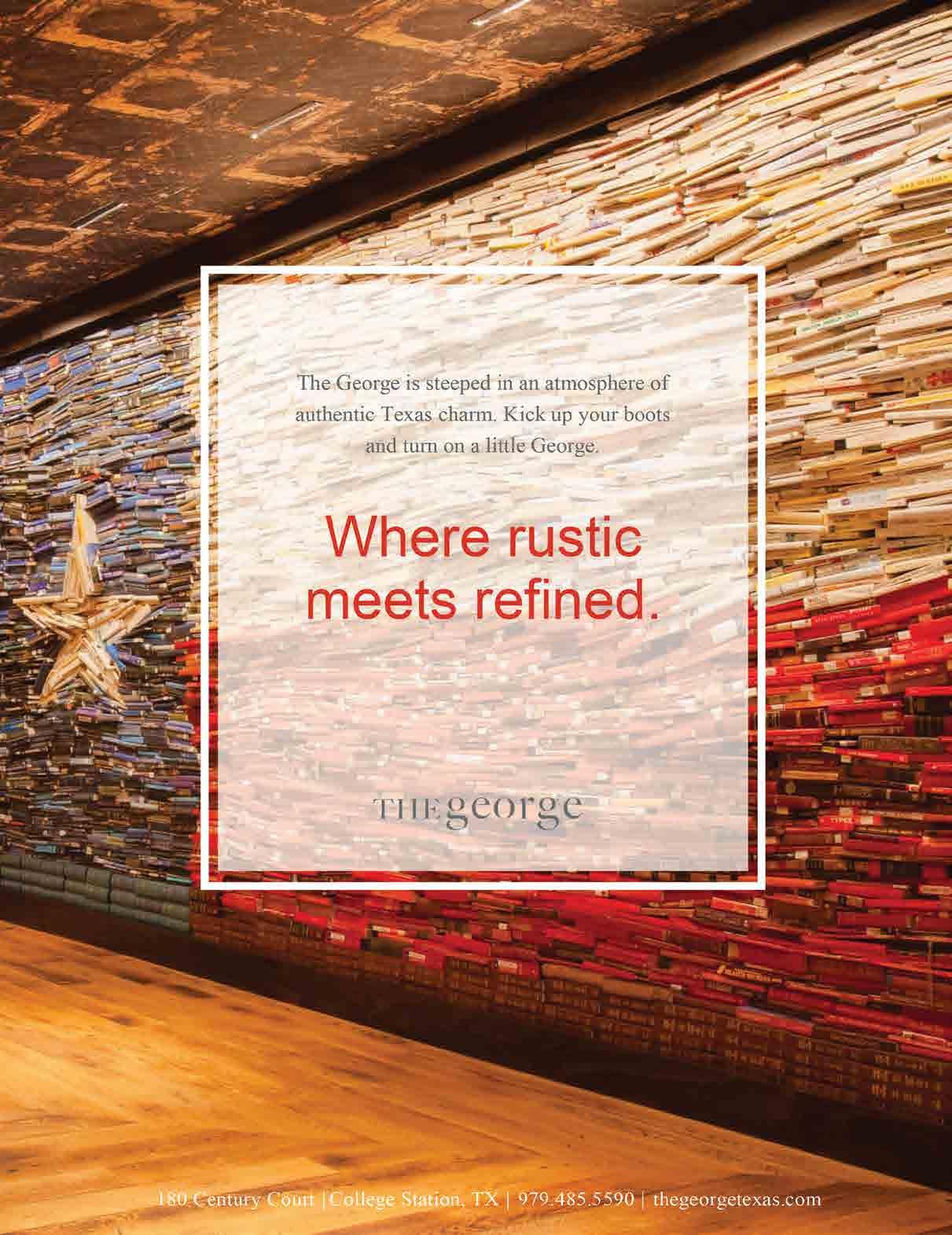


Every fall, Dallas transforms into a lively hub of excitement with one of the greatest shows on earth—the State Fair of Texas. It’s a tradition that feels almost sacred for those of us who have experienced it, and if you haven’t made the trip yet, it’s high time you do. The fair is a spectacular blend of culture, food, entertainment, and history, making it the perfect destination for a family outing. Standing tall at the heart of the fair, Big Tex, the iconic cowboy, greets visitors with his booming voice and largerthan-life presence, serving as the ultimate symbol of Texas hospitality and charm
The moment you step onto the fairgrounds, you’re greeted by the aroma of everything fried—corn dogs, funnel cakes, and even fried butter, if you’re feeling adventurous. The variety of food is astonishing, catering to every craving you might have. There’s something special about indulging in a delicious fried treat as you stroll through the vibrant atmosphere of the fair, with laughter and music filling the air.
Beyond the food, there’s so much to see and do. The rides are a thrill for all ages,
from classic carousels for the little ones to adrenaline-pumping roller coasters for the daring. But the fair isn’t just about rides and food; it’s also about marveling at Texas traditions, like the impressive livestock exhibitions that showcase the best in cattle, goats, and even llamas. It’s a great way to learn more about Texas’s rich agricultural heritage and appreciate the hard work that goes into raising these animals.
And then, of course, there’s the Cotton Bowl, a miraculous structure with a history as rich as the state itself. As the former home of the Dallas Cowboys and still the site of the Red River Showdown. The Longhorns and the Sooners will play for the Golden Hat trophy, and the Governor’s Trophy. Walking through its historic grounds adds another layer of nostalgia and pride to the fair experience.
Making the State Fair of Texas a family tradition is a choice you won’t regret. Each visit offers something new—new foods to try, new shows to see, and new memories to make. It’s more than just an event; it’s a celebration of everything that makes Texas unique. So, pack up the family, head to Dallas, and get ready to immerse yourself in the fun and excitement of the great Texas State Fair. It’s a trip that will become a cherished annual tradition.



STORY BY BUCK MAYERS

How many golfers top the golf ball and don’t know why? And more importantly, you don’t know how to fix it. I’m sure you have been told that you looked up or didn’t keep your head down or still. As one of my mentors, and arguably the best teacher of all time, Harvey Penick said, “neither looking up or keeping your head down is the reason you top or mishit the golf ball”. He is 100% correct on one of the most misunderstood problems in golf.
The real problem occurs from pulling the club handle up with the lead elbow. Some golfers call it the “chicken wing” or “alligator arms “. Why could this be happening? More times than not, you’re trying to lift or scoop the ball into the air. Trying to keep your head down and still is one of the main causes of thin and topped shots.
The second reason for topped shots is your failure to shift your weight in transition to the lead foot. This critical move in the golf swing causes anxious or quick moves from the top and casting occurs. Casting, throwing or releasing the golf head too early will result in the pulling of the handle to help the ball go up. The golfer released the energy of the club too early and all they have left is to pull the arms in to hit the ball. The golfer’s goal should be to learn how and when to accelerate the club, through the ball, not at the ball.
Now you know the causes and the effects of why you top it, so let’s fix it. The very first thing to work on is the “magic move” or the transition. You must feel the ground with your feet. I call it dancing with the ball. Start with feeling your weight moving to each foot without swaying or sliding. Turn! Letting your heels come up and move down slightly will improve getting to your front foot first, before your arms and hands move down.
Secondly, feel your trail elbow move down and into the trail pocket while your hands fall, not release. Now you have more stored energy to release the club properly through the ball. Tee up a few balls and hit some half swing shots to feel the proper sequence of events described above. The goal is to create the swish, the extension of the arms, and releasing all the energy through the ball. I try to get my students to focus on the destination or follow through of their swing to avoid too much clutter. Remember, start with small swings and build up to longer swings. Keep it simple silly!


STORY BY DENISE CAMP
I’m not sure how sleeping on a bed of ice in a room made entirely of ice and snow ends up on someone’s bucket list, but there we were in Norway, ticking off an item from Robert’s list—spending the night in an ice hotel. While there are numerous ice hotels around the world, both seasonal and year-round, our ice torture of choice was the Snowhotel Kirkenes in northern Norway, just 20 minutes from the Russian border. Standing in front of the hotel check-in building, wearing every article of clothing that I own, I realize that I should have more strongly emphasized to Robert how much I dislike the cold.
he Snowhotel Kirkenes is more than just an ice hotel though. It also features individual wooden cabins inspired by ancient Norwegian huts, a restaurant/reception area, a dressing room/ locker area for snow hotel guests, and a variety of Arctic adventures. Before our night of braving the cold, the hotel offered a tour and orientation dinner for all guests staying in one of the ice rooms. I can honestly say I’ve never needed a lesson on how to sleep before, which might say everything you need to know about how unique this hotel is compared to any other place you’ve stayed.
We had booked a dog sled ride for 1 p.m., and I’m glad we scheduled the earlier ride. Winter darkness descends around 3 p.m., so a later ride would have meant missing the stunning winter wonderland scenery. The hotel provides necessary gear like overalls, balaclavas, and mittens to keep you “warm” during
the ride, but make no mistake—it’s still COLD. About halfway through, the driver stopped in a sheltered forest area for some hot, spiced lingonberry tea, which was available in several places around the hotel and quickly became an obsession of mine. It reminded me of a non-alcoholic version of holiday Wassail. After the brief stop, we finished our dog sledding adventure with an exhilarating dash across a frozen lake and returned to the hotel to relax before our orientation dinner.
During dinner, we met the other guests and learned the peculiarities of sleeping in the ice hotel. We discovered that we would need to step into our giant, hooded sleeping bags fully clothed, leaving only our boots by the bed. Only once in the sleeping bag should we undress (except for long johns and balaclava), keeping our clothes inside the bag to prevent them from freezing. Once settled in our ice-and-snow room, we hoped we wouldn’t need to get up for any reason.



As someone who sleeps with the television on, I wasn’t prepared for how absolutely silent the snow hotel was at night. That was until the unmistakable sound of a zipper being repeatedly zipped and unzipped broke the silence. Zip… zip…zip. Robert, my stomach-sleeping husband, was struggling to get comfortable in the hooded sleeping bag without suffocating himself. As a side sleeper, I had already determined that the only way to avoid breathing my own carbon dioxide was to sleep on my back. I also realized that I couldn’t sleep with a balaclava on, so I took it off, stuffed it in the sleeping bag with my
About halfway through the night, I woke up to the disheartening realization that I needed to use the bathroom. Do you know what the rooms at the snow hotel don’t have? Bathrooms! So, I had to get dressed inside my sleeping bag and make my way to the next building, where there was a sitting room with hot drinks and a locker/ dressing room for snow hotel guests. To my surprise, several other guests had opted to sleep in the sitting room rather than brave the night in Icebar.
clothes, and hoped my face wouldn’t have frostbite in the morning.


their room of snow and ice. I couldn’t decide if they were quitters or geniuses. After returning to our room and undressing in the sleeping bag yet again, I settled in for a few more hours of sleep.
Checkout at the snow hotel is early, but we were up even earlier for a day trip to Russia. In Russia, Christmas is celebrated on January 7th, and since we were there shortly after, the downtown areas of the small towns we visited were still decorated for the holiday. After exploring a monastery, several museums, and the towns of Nikel and Zapolyarny, our driver took us back to Norway. With our tour guide remaining in Russia and our driver speaking only Russian, we spent much of the dark, desolate drive hoping he was actually taking us back to Norway and not to Siberia.
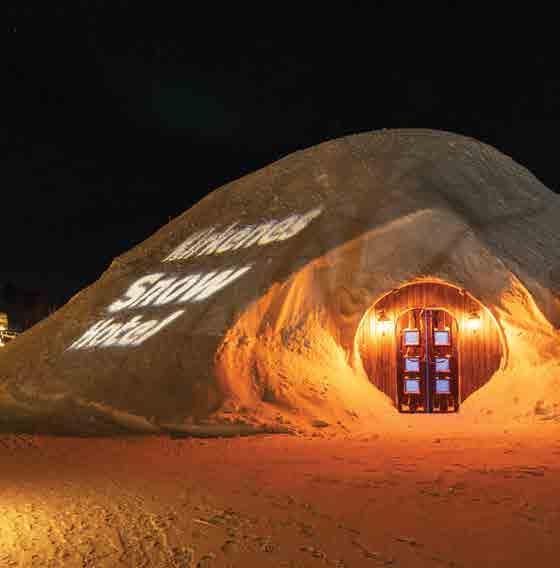

For our second night in Kirkenes, we had reserved one of the Gamme Northern Lights Cabins. But before checking into the cabin, we went on a “Hunting the Northern Lights” tour. A bus took us far from the city’s light pollution in search of the Aurora Borealis. After staring at an unremarkable sky for a while and growing cold and tired, we returned to the warmth of the bus. One of the tour guides joined us and suggested we step back out, feeling optimistic about seeing the Northern Lights soon. Almost immediately after leaving the bus’s warmth, the sky lit up with the undulating blues, greens, and yellows of the Aurora Borealis. No words or pictures can truly capture the spectacle; it’s something everyone should experience at least once in their lifetime. About twenty minutes later, the lights faded, and we boarded the bus to return to the hotel.
Once in the Gamme cabin, having a coffee maker and a bathroom felt like an embarrassment of riches after the snow hotel experience, but the real highlight was the large picture window overlooking the Norwegian sky. Exhausted, I made a cup of coffee, sat in front of the window, and gazed at the night sky until I could no longer keep my eyes open.
The next morning, we packed up and prepared to catch the shuttle to the Kirkenes airport for our long journey home. Robert was pleased to have ticked “stay in an ice hotel” off his bucket list, though I’m not sure he enjoyed it as much as he expected. I, on the other hand, surprised us both by saying I would absolutely do it again. Sometimes, you have to give up five-star hotels with room service and sleep on a bed of ice to realize what you’ve been missing.
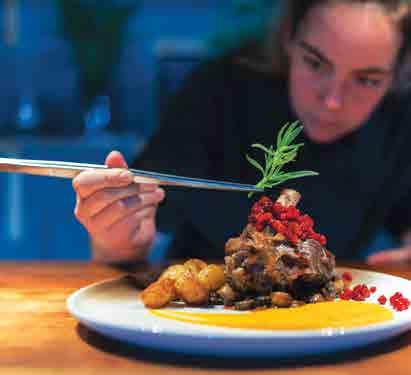

Denise and Robert Camp have visited 38 countries and you can follow their travels at wanderingcamps.com or @wanderingcamps on Instagram.
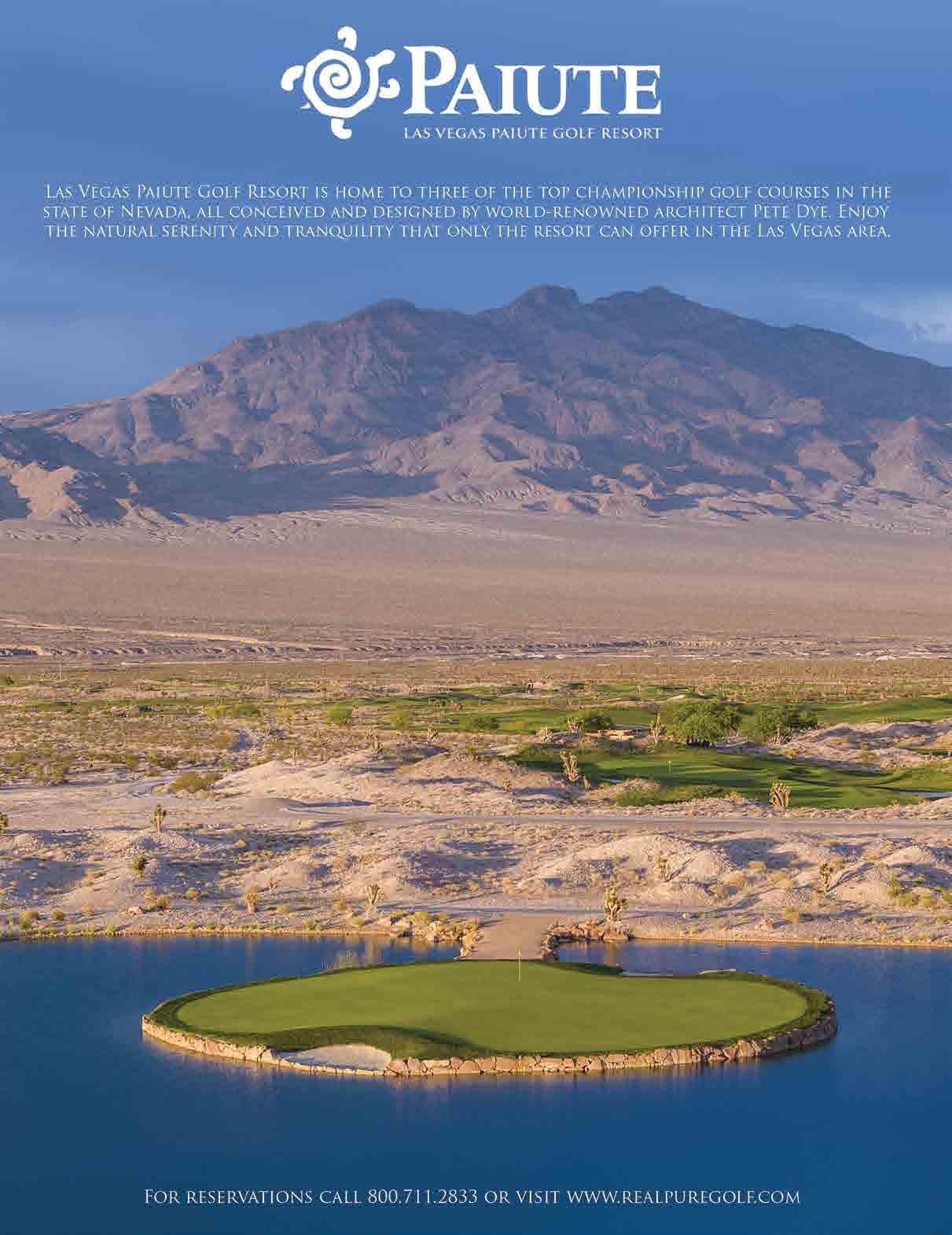


STORY BY ART STRICKLIN
All Big Easy Ranch owner Billy Brown wanted was the best. The best for his hunting ranch, his golf course, his clubhouse, practice area and his lodging. Just the best and after the overwhelming success of his new 18-hole championship course designed by Texas architect Chet Williams at the Covey Golf Course, he is well on his way to achieving his goal.


I just want be the best of everything we do here,” Brown said waving his hand over the thousands of prime wooded acreage in Colorado County between San Antonio and Houston, near the small town of Columbus. “I want this golf course to be the best, the hunting and game lodge to be the best, the food, lodging, everything and we have the will and dedication to do it. We want to be the best in Texas and then one of the best in the country,” he said.
It first opened in 2016 with the 12,000 square foot lodge, hunting club and par 3 designed by Williams with the entire complex stretching over 2,000 total acres. Before then, the area was used by Brown, who has roots in the Louisiana energy business, to entertain clients and friends.
“I had a big party barn and hunting area. But what gave me the idea of doing a club was that people enjoyed it so much and there was such a long list of people who wanted to be here.”
The opening allowed people, mostly from the Houston area and now all over the state, to come and enjoy
the food, the massive clubhouse, the hunting and chance to work on their short game at Williams designed par 3, known as the Antlers.
Pleased by the success of the golf short course, Brown ask Williams if he would design a 18-hole championship course on a scenic and hilly 250 acre piece of land, near the lodge and a 6,000 square foot teaching center and pro shop.
“The golf course property at The Covey is blessed with as many interesting natural features of any property I have ever worked on, and we have incorporated them all into the design of the course, said architect Williams, who designed three of the top 10 ranked courses in the Dallas Morning News annual survey.
The par 72 course which measures 7,500 yards from the back tees opened in the spring of 2023 and was an instant hit for hundreds of members, guests and golf media. It was recently named the Big New Golf Course in Texas in the prestigious Dallas Morning News annual statewide survey.
It was also named the 10th best course in the state, the first new course to debut in the top ten statewide in more than a decade. Golf Digest named it one of 12 intriguing new courses in the state after its opening.

“Big
“The ridges and valleys with 90 degrees of elevation change, creeks, ponds, and specimen trees all contribute to making it a very special place.” Williams added.
With the instant success from the golf, continued interest in hunting and plus fine dining, Cajun food creations and early morning breakfast tacos, Brown and Big Easy could rest on their considerable laurels. But that’s not the way the passionate and colorful owner thinks.
He was driving on the property one day and came upon the ridge that overlooks the par 3 9th hole and has sweeping views of much of the course. Brown wanted to do midway stop for golfers to fuel up between nines, but the more he looked at the space, the more he wanted something unseen in Texas if not the USA.
He started researching golf halfway houses in Texas and found there were no two story golf rest stops anywhere in the Lone Star State. The only one he could find nationally was at top-ranked Pine Valley, which fit his mentality of being the best.





The result was the unmatched Eagles Nest which opened his fall, overlooking the 9th green with downstairs and upstairs sitting areas, eating and drinking. There’s a 10,000 square foot putting green designed by Williams, for a quick pit stop between nines or a longer stay before or after your round at The Covey at Big Easy.
“We wanted something nobody else had and with the opening of the Eagles Nest the putting green, eating and drinking area upstairs and down, we certainly do, “Brown said.
With the best of both, hunting and golf, often in the same day, you need somewhere to rest as well. That’s why Brown built several luxury cabins near the main lodging for overnight accommodations for members and guest and has recently seen a boom in the on-site real estate market.
Estate lots begin from ¾ to 1 acre in size and start at $825,000 with several custom homes underway or completed. There is also villas available and fractional ownership.
Ask what would be a perfect Big Easy Ranch day; Brown didn’t have to think too long to come up with one. There could be hunting in the morning with whitetail and exotic game hunting plus wing shooting with upland field hunts, European pheasant drives and flighted Mallard duck hunts, The lakes are stocked with big mouth bass. redfish and other seasonal fish.
Then there is the large practice area, indoor teaching center with head pro Casey Russell, and Williams’s par 3 course, the Antler. Of course, the majority of the afternoon is taken up for the championship 18-hole layout which will host the Texas Mid-Am match play in 2026 and the 120th Texas Amateur in 2029.
Absolutely the Eagles Nest has to be part of the golfing plan before, during and after, then it’s time for dinner in the clubhouse, drinks and stories around the fit pit and a chance to do that all over again the next day, even if you change up the order.
“My goal for Big Easy Ranch is to be an utopia to escape the city and enjoy the ranch life and all the amenities with a relaxed country club feel,” Brown said.
For more information on most unique Texas luxury private golf option, go to bigeasyranch.com and see “A Sporting Club Like No Other.”





STORY BY MARC HALL
It’s 2009. Jason Moore is caddying for his older brother Ryan, who plays on the PGA Tour. The boys have always had a tight relationship – even though five years separated them – and seem destined to work in golf. They’d spent much of their childhood on their father’s Linksman driving range in Tacoma. Ryan would pound balls on the range while Jason worked a stand peddling balls he pulled from the range collection for 50 cents apiece.
By 2009, Jason’s looping for Ryan, training with him, and practicing with him every day.
Then Jason reads a new book – Born to Run: A Hidden Tribe, Superathletes, and The Greatest Race the World Has Never Seen written by Christopher McDougall – that’s essentially about indigenous tribes that don’t wear shoes and the health benefits that they experience because of it. A bell goes off in his head; Why are there no minimalist golf shoes?
“Ryan and I started working on these concepts and consulted expert podiatrists who were key to helping us understand the benefits of zero-drop footwear with wide toeboxes,” recalls Jason. “It was a mental breakthrough. Fortuitously, we got connected with a couple of guys who had an idea of starting a minimalist golf shoe company and we all came together. From those meetings, we created some prototypes and samples. The whole first generation of footwear was based on this idea of barefoot style footwear with a wide toe box, anatomically shaped, lightweight, flexible sole and zero drop -- meaning it’s level from heel to forefoot. Our first styles were built around those five key frameworks.”
Over the past decade, TRUE’s “OG” lineup has developed an incredibly loyal following. “In that time, we’ve learned a lot and taken feedback from our customers and PGA TOUR players with a design that has culminated in the Next Generation of the TRUE OG footwear offering. With the new OG Cush, we were able to maintain the design principles of the OG while adding more cushion underfoot to feel even better on long days on or off the course. We also created an attractive-looking all-season shoe and designed the tongue and entry area, so the shoes are easier to get on and off, even for people with wider feet. In truth, it’s the most comfortable and most versatile OG shoe we’ve ever made with a really striking modern, active-lifestyle aesthetic.”
The OG Cush marries a barefoot feel with maximum comfort. Working with podiatrists and foot health experts, the OG Cush has a first-of-its-kind zero drop Wanderlux foam (6MM of underfoot foam) cushioned platform for a comfortable ride while maintaining a healthy, ergonomic fit and feel; forget you are even wearing shoes. The zero drop sole means it’s completely level from heel to forefoot. The new boosted Wanderlux cushioning will wear into each individual foot shape over time and create each person’s natural arch. This will provide more arch support with each step.
The new cushioned midsole also features a brand-new versatile rubber ‘T’ tread that improves traction, balance, and stability while maintaining its signature comfort. The new tread performs well in any environment - from the course to the trail, the streets, or even at the office. The OG Cush is designed to look like a modern shoe while providing unrivaled comfort and cushioning in every step.
“We’re excited to see what consumers think and we hope it will be that we listened to their feedback and created a shoe that fits naturally and ergonomically but also pairs well
aesthetically with anything in their wardrobe,” says Moore. “From the added cushioning to an exceptional tread that performs great on the course, on the trail, on concrete or wherever the day takes you, we think people are going to be thrilled to make this their everyday lifestyle shoe because the looks and performance are amazing and lightweight, cushioned nature of the OG Cush makes it a total a joy to wear.”
It’s clear that each Moore knows his own role at TRUE. Jason is the creative director behind products and the brand, with a passion for the golf community and golf footwear. And Ryan checks in daily, running a lot of research and development testing, providing feedback on products, coming up with new product ideas, connecting the brand with more Tour players to wear TRUE, and cultivating connections with resorts and event venues.
“He’s not just a brand evangelist, he cares about the products that we release,” says Jason. “At one point I built three new models. And he called me one day and asked if I would wear all three. I said I’d only wear two and don’t actually like the third one but somebody probably would. He quickly asked why we would make that third model then. That’s been a guiding ethos moment for our company. If we wouldn’t wear it or recommend it, then why would we produce it? I think that’s a huge differentiator when you compare our approach to other brands who put out products solely because of revenue targets or just to have a spring announcement. We’ve avoided that kind of mindset. If it has a TRUE stamp on it, that’s only because we actually think it needs to exist.”
The breakthrough new OG Cush is available in men’s and women’s sizes, including White, Grey, Black, PNW Grey Haze, and Patriot. MSRP: $175
For more information on TRUE and its new products, visit www.truelinkswear.com.

STORY BY HUNTER HAM

I’ve been a sommelier for a while now and I’ve come to learn that wine service is more than just pouring a glass of wine it’s a whole art, a dance, and sometimes, a bit of a gamble. When you walk up to a table, you’re not just bringing a bottle; you’re bringing years of tradition, a good time, a story in a bottle, and a hope that the wine you’re about to serve will be the perfect fit for that exact moment!

I’ve had the pleasure of working at some incredible restaurants and being a part of wine programs that would make any wine lover’s jaw drop. But whether it’s a twodollar happy hour pour or a bottle of Château Margaux, service always starts with one
thing: attention. I’ve seen sommeliers miss the mark by treating service like an assembly line – it’s not. Each table, each guest, each bottle is unique, and you have to approach it like so. There’s a certain responsibility that comes with opening a bottle of wine for someone. You’re not just handing them a drink; you’re giving them an experience.
One of the first steps in wine service is the presentation. Sounds simple, right? Just hold the bottle, make sure the label is facing the guest, and voilà. But in reality, it’s much more than that. The way you handle the bottle speaks volumes about your confidence and knowledge. There’s a fine balance between showing authority and coming off as a wine snob – trust me, the latter never plays well.

And then there’s the cork, the little piece of tree bark that can be the source of either great joy or immense frustration. Ever pulled a cork too fast and had it break off halfway through? Yeah, that happens, to everyone, I promise. You feel your heart sink for a moment, but then you take a breath and get to work on fixing it. No big deal – just keep your cool. Because wine service is about being smooth under pressure. When a cork breaks, you don’t panic; you adjust, adapt, and move forward.
But here’s the truth, breathe, not everyone will care about all this. Some people just want a glass of wine and don’t care about the story behind it or
the nuances of the terroir. That’s okay too. At the end of the day, it’s about the guest’s experience, not yours, if they are happy then you should be too. But when you do get that table, that one guest who really gets it – those are the moments that remind me why I love what I do. Wine isn’t just a job, it’s a passion, and sharing that passion is what makes being a sommelier so rewarding.
So, next time you’re out and someone serves you wine, take a moment to appreciate the thought, care, and yes, sometimes mistakes, that went into making that service as seamless as possible. From you favorite local sommelier, cheers!
STORY BY TOMAS ZILINSKIS

When we think of cigars, pairing them with a fine whiskey or cognac often comes to mind. However, the intersection of cigars and cuisine is an often overlooked but incredibly rewarding experience. Pairing cigars with food, much like wine pairings, can elevate both the dining and smoking experiences, creating a symphony of flavors that linger long after the last puff.
To master cigar and food pairings, it’s essential to understand the flavor profiles of both the cigar and the food. Cigars, like food, offer a spectrum of flavors ranging from earthy, woody, and spicy to sweet, nutty, and creamy. The key is to find complementary or contrasting flavors that enhance each other rather than overwhelm.
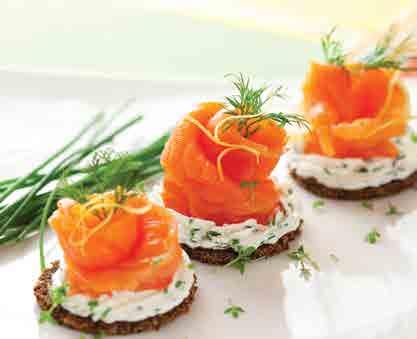
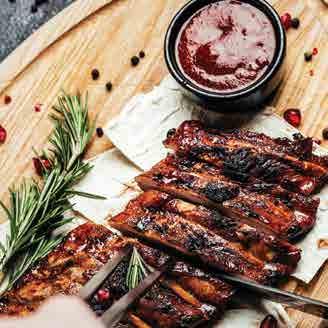

Starting a meal with a light and crisp cigar can prepare your palate for the courses ahead. A mild cigar with creamy and nutty notes, such as a Connecticut Shade, pairs wonderfully with appetizers like a delicate goat cheese tartlet or a smoked salmon canapé. The creaminess of the cigar accentuates the richness of the cheese while the mildness ensures it doesn’t overpower the subtleties of the salmon.
When pairing cigars with the main course, consider the intensity of both the dish and the cigar. A rich, full-bodied cigar like a Maduro, with its deep cocoa and espresso notes, pairs beautifully with hearty meats such as a ribeye steak or slow-cooked barbecue. The robust flavors of the cigar complement the smokiness of the meat, creating a balanced and satisfying experience.
For those who prefer lighter mains, like a herb-roasted chicken or grilled seafood, a medium-bodied cigar with hints of cedar and spice, such as a Habano, can be an excellent match. The cigar’s complexity mirrors the layers of flavor in the dish without overshadowing it.
Dessert is where the pairing possibilities truly shine. A dessert with rich, sweet flavors, such as a dark chocolate mousse or a caramel flan, pairs exquisitely with a cigar that has sweet undertones. Consider a cigar with notes of vanilla, honey, or dried fruit, such as a Cameroon wrapper, which can bring out the caramelized notes in the dessert.
For a more adventurous pairing, try matching a spicy dessert, like a chili-infused chocolate cake, with a peppery cigar. The interplay of spice and sweetness can create a thrilling end to your meal.
Pairing cigars with food is an art form that requires both creativity and a deep appreciation for flavors. By carefully considering the flavor profiles of both the cigar and the food, you can craft pairings that not only complement but also enhance each other. So next time you light up, consider pairing your cigar with a carefully chosen dish—you might just discover a new dimension of enjoyment.


